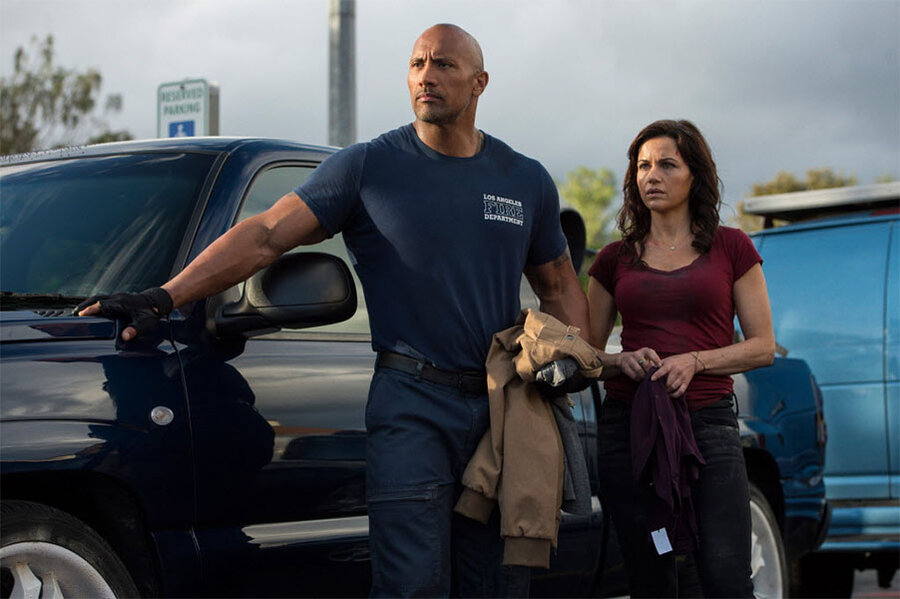'San San Andreas' actor Dwayne Johnson: 'I always found [quakes] fascinating'
Loading...
Hulking actor Dwayne "The Rock" Johnson creates a new save-the-day persona as a rescue pilot in the California earthquake thriller "San Andreas," which is now in theaters.
Johnson, 43, talked to Reuters about recreating the magnitude 9-plus earthquake, an even bigger challenge than doing "Fast & Furious" films with Vin Diesel. Below are excerpts of the interview.
Q: What attracts audiences to a film like this?
A: You're dealing with Mother Nature at her strongest and it is the biggest earthquake ever recorded.
It's a platform for people to experience something on this epic level that they know unfortunately could happen.
They're able to be entertained, they're able to lose their breath ... and then they're able to leave the theater and talk about it, like, 'Wow, I wonder what we would do?'
Q: Were you an earthquake enthusiast before the film?
A: I wouldn't say I was an enthusiast. I always found them fascinating.
One of the best parts was having our seismologists, our scientists from Caltech (the California Institute of Technology) and USC (University of Southern California), all earthquake specialists who pored over this script, who challenged us, who continued to take a scalpel and say, 'No, that wouldn't happen.'
By the time we were done, they walked away saying, 'OK, this could happen.'
The fact is there's a San Andreas fault, which we're sitting above right now.
Q: You've been on so many sets, what sets this one apart?
A: Everything that was built to scale. That sets it apart.
When you're dealing with the biggest earthquake of all time, we really wanted to rely on practicality and not a lot of green screen. We shot in San Francisco Bay, outside of AT&T Park, in one of the largest water tanks in the world. I believe the largest one is in Mexico, that they used for 'Titanic.' We had the second largest one.
So when you're there and you're shooting and everything is to scale and you're feeling the destruction, in our little movie-making way, it becomes so clear and jarring that this is just a slight sliver of what it would really be like.
Being on sets with Vin Diesel is challenging. This blows him out of the water.
Q: So were you scared?
A: Never. Are you kidding me? No. Because I know the cameras are on. Never, never.







